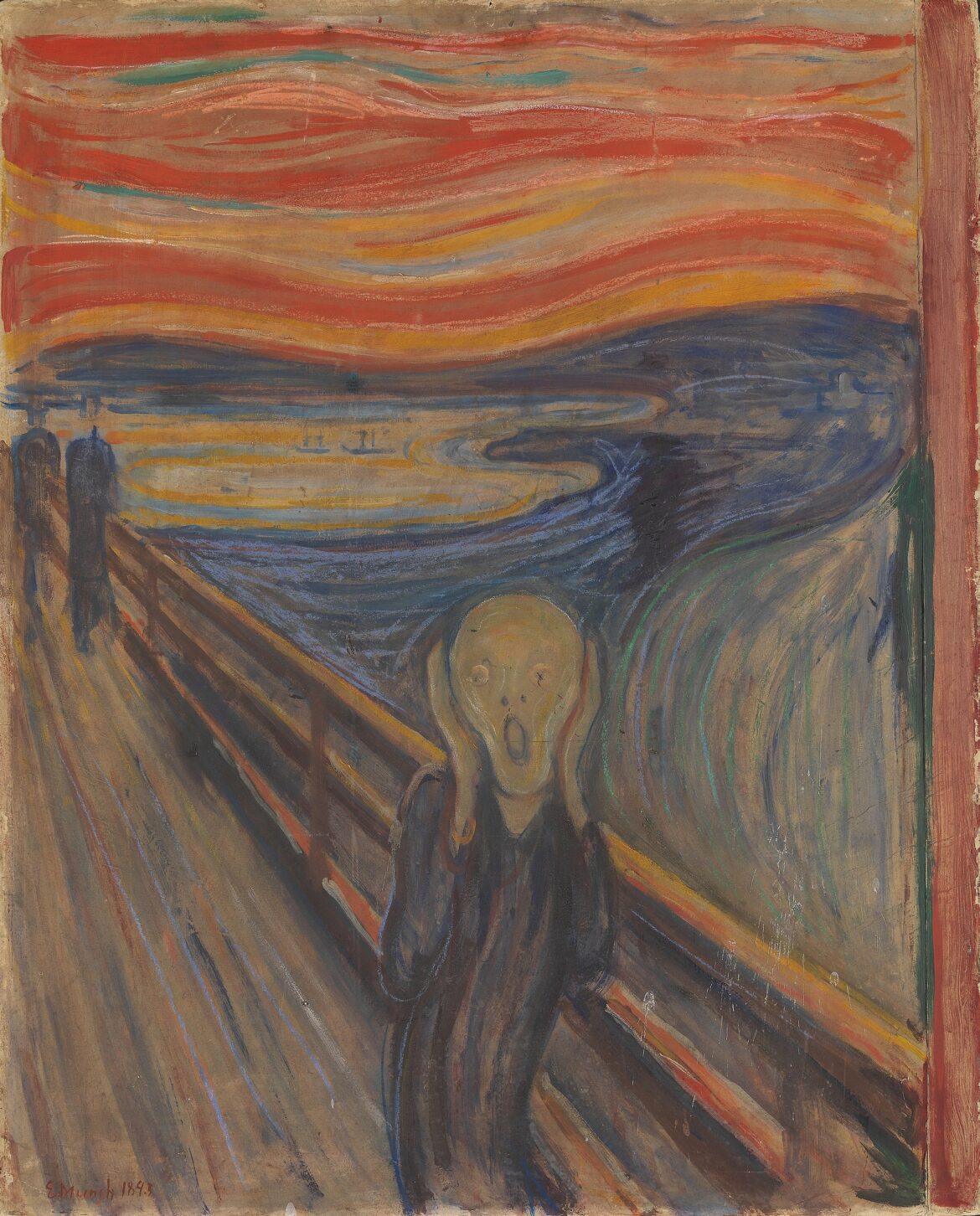Edvard Munch’s most iconic painting, The Scream, created in 1893, captures an intense emotional experience that has resonated with viewers for over a century. The painting depicts a figure standing on a bridge with an agonized expression, hands pressed against its face, as swirling, vibrant colors of the sky and landscape reflect an overwhelming emotional state. The figure appears isolated, both physically and emotionally, from the rest of the world.
The Meaning of “The Scream”
Munch explained that The Scream was inspired by a personal experience. As he walked along a path with friends, he felt a sudden sense of overwhelming anxiety and fear, describing it as “the scream of nature.” The painting is often interpreted as an expression of existential dread, human isolation, and profound anxiety. It symbolizes the struggle of modern individuals faced with overwhelming emotions and inner turmoil, conveying an almost primal reaction to the stress and chaos of life.
Neurological Perspective on “The Scream”
From a neurological standpoint, The Scream could be analyzed in the context of how the brain processes emotions like fear, anxiety, and panic. The central figure’s distorted face and posture seem to reflect a classic “fight or flight” response, mediated by the amygdala—one of the brain’s key centers for emotional processing. The amygdala reacts to threats, triggering intense feelings of fear and anxiety, much like what Munch described experiencing during the event that inspired the painting.
Moreover, the swirling background and distortion of space and color may represent altered perception, which can occur during panic attacks, severe anxiety, or conditions such as depersonalization disorder, where individuals feel detached from their surroundings. This visual disarray reflects the chaos inside the brain, as hyperarousal and heightened sensory awareness overwhelm cognitive and emotional functions.
The painting may also relate to conditions like migraine auras or visual hallucinations associated with neurological disorders such as epilepsy. These episodes can cause visual distortions and intense emotional experiences, akin to what is depicted in The Scream.
The Scream can be seen as a representation of the emotional and psychological stress that may manifest physically. The overwhelming sense of panic and emotional chaos can trigger physical symptoms such as paralysis, tremors, or seizures. Munch’s figure, frozen in a moment of pure distress, mirrors how individuals with FND can feel trapped in their own emotional experiences, unable to control the physical manifestations of their inner turmoil.
Thus, The Scream resonates not only as a cultural symbol of existential anxiety but also as a profound visual metaphor for the neurological and psychological experiences that can overpower the human mind and body.

